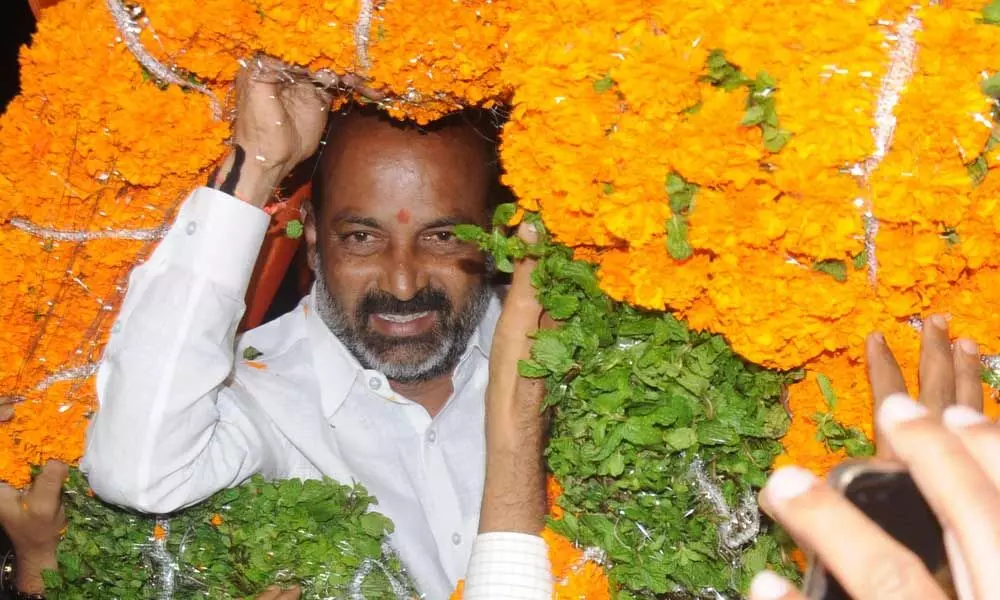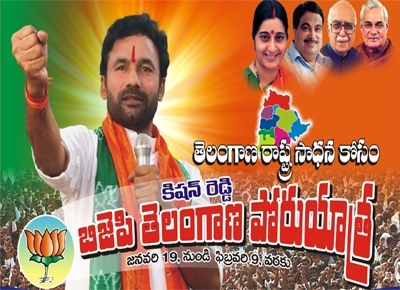For decades, the politics of the Telugu states were a closed club — dominated by regional satraps and sustained by welfare populism and caste arithmetic. The Bharatiya Janata Party (BJP), once dismissed as a northern import, has now stormed into this once impregnable arena, changing the tone, texture, and trajectory of Andhra Pradesh and Telangana politics. The saffron surge may have been slow, but it has been steady — and now, unmistakable.
Telangana has turned out to be the BJP’s biggest southern success story after Karnataka. From a negligible 7% vote share in 2014, the party has grown into a formidable challenger, crossing double digits (14–16%) in the 2023 Assembly polls and touching nearly 35% vote share in the 2024 Lok Sabha elections.
In 2019, the BJP shocked political observers by winning four Lok Sabha seats — Nizamabad, Karimnagar, Secunderabad, and Adilabad — and proving it was no longer a fringe player. By 2024, it doubled that performance with eight parliamentary seats, effectively replacing the BRS as Telangana’s principal opposition force.

This transformation didn’t happen overnight. The BJP carefully cultivated its base in northern and central Telangana, where temple issues, Dalit neglect, and Hindu consolidation resonate strongly. It also appealed to the urban middle class disenchanted with dynastic politics and corruption. The party’s repeated emphasis on ending “minority appeasement” and its assertion of “equal rights for Hindus” have struck a chord in a state fatigued by the selective secularism of both the Congress and the BRS.
With local body elections around the corner, the BJP’s organizational machinery — strengthened by thousands of booth-level committees, temple protection groups, and youth wings — is expected to carry this momentum deep into rural Telangana. What was once a largely urban movement is now extending into the countryside, riding on resentment against Congress’s renewed quota politics and the perception that the state government’s welfare bias continues to favour Muslim minorities.

In neighbouring Andhra Pradesh, the BJP’s growth has been more tactical but no less significant. The party was virtually non-existent in 2019, with a dismal 0.84% vote share after going solo post-bifurcation. But the 2024 elections changed the landscape. Rejoining hands with the Telugu Desam Party (TDP) and Pawan Kalyan’s Jana Sena Party (JSP) under the NDA umbrella, the BJP rode the alliance wave back into relevance. It secured three Lok Sabha seats and eight Assembly seats, while its individual vote share soared to 7–8% — a nearly tenfold rise.
Behind those numbers lies a clear pattern. Discontent among Hindus, especially temple devotees and the middle class, has been steadily growing under Jagan Mohan Reddy’s YSRCP regime, which has been repeatedly accused of diverting temple funds and disproportionate spending on minority welfare schemes. The BJP has shrewdly positioned itself as the protector of Hindu interests and the voice of silent majorities tired of being ignored in the name of secularism.

The Modi factor, too, has worked in Andhra’s favour. Many first-time voters, small traders, and beneficiaries of central schemes like Ujjwala, PM Awas, and Jal Jeevan Mission see the BJP as a symbol of governance and stability — in stark contrast to the chaos of state politics.
The Congress in Telangana and the YSRCP in Andhra may call it “polarisation,” but the BJP calls it political correction. When identity politics is played one-sidedly for decades — when temple land is encroached upon, minority appeasement becomes a budget item, and merit is sacrificed for vote banks — a counter-current was bound to rise. The BJP has become the natural rallying point for this sentiment, offering both ideology and governance credibility.
The rise of Hindu consolidation in both states isn’t accidental; it’s a reaction. The more regional parties double down on minority quotas and selective welfare, the more voters across castes are beginning to identify with the BJP’s message of cultural pride and equal opportunity. The shift is most visible among OBCs and economically backward Hindus, who now see the BJP not as a “northern party” but as their party.
Ten years ago, the BJP’s presence in the Telugu states was symbolic — one or two MLAs, negligible vote share, and little grassroots structure. Today, it is the main opposition in Telangana, a powerful NDA partner in Andhra, and a serious force in both urban and semi-rural belts. From less than 5% vote share in 2014 to double digits in Telangana and 7–8% in Andhra Pradesh, the trajectory is clear and steep.
The coming local body elections in Telangana will be the real test. If the BJP manages to replicate its Lok Sabha performance at the grassroots, the saffron flag may soon flutter over many zilla parishads and municipalities — heralding a political realignment long overdue in the South.
The BJP’s message is resonating across caste and class lines: that no state can progress if governance is held hostage by appeasement and dynastic politics. The next decade could well see what was once unthinkable — the BJP becoming the defining pole of Telugu politics, not as an outsider, but as a rooted, assertive, and expanding force.





